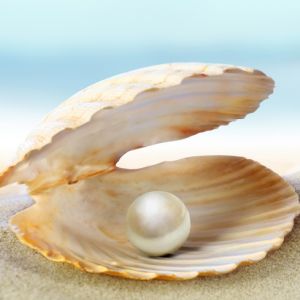Ceramic Membrane Market Will Record an Upsurge in Revenue during 2023-2030Posted by Pearl Smith on March 9th, 2023  A ceramic membrane is a type of filtration membrane made from inorganic materials such as alumina, titania, zirconia, or silica. Ceramic membranes are known for their high chemical and thermal stability, making them ideal for use in harsh environments. Ceramic membranes are used in a wide range of applications, including water treatment, gas separation, food and beverage processing, and biotechnology. They are particularly useful in applications where high temperatures or corrosive chemicals are present. Ceramic membranes have several advantages over other types of filtration membranes, such as: High durability and long lifespan The ceramic membrane market is expected to grow significantly in the coming years, driven by the increasing demand for water treatment and wastewater management solutions in various industries such as food and beverage, pharmaceuticals, and chemical processing. Key companies covered as a part of this study include TAMI Industries, Pall Corporation, A-tech Innovation GmbH, Hyflux Ltd., Jiangsu Jiuwu Hi-Tech Co. Ltd., Veolia Water Technologies, GEA Group, Nanostone Water Inc., LIQTECH A/S, Saint Gobain, Qua Group LLC., and Toray Industry Inc. The ceramic membrane market is expected to continue growing in the coming years due to several factors, including: 1. Increasing demand for water treatment: The growing global population and urbanization are leading to an increase in demand for clean water, which is driving the growth of the ceramic membrane market. Ceramic membranes are used in various water treatment applications, including desalination, wastewater treatment, and potable water treatment. 2. Advantages over other membrane types: Ceramic membranes offer several advantages over other membrane types, including high durability, resistance to high temperatures and corrosive chemicals, and high selectivity and separation efficiency. As a result, ceramic membranes are becoming increasingly popular in various industries, including food and beverage, biotechnology, pharmaceuticals, and chemical processing. 3. Increasing industrialization: The increasing industrialization in developing countries is leading to a higher demand for ceramic membranes, particularly in industries such as food and beverage and chemical processing. The use of ceramic membranes in these industries is driven by the need for improved filtration and separation processes to ensure product quality and safety. 4. Technological advancements: Technological advancements in the production of ceramic membranes are driving the growth of the market. New manufacturing processes and materials are being developed that allow for the production of more efficient and cost-effective ceramic membranes. The demand for ceramic membranes is increasing due to several factors, including: ◘ Water treatment applications: The demand for ceramic membranes is increasing in water treatment applications, including desalination, wastewater treatment, and potable water treatment. The growing global population and urbanization are driving the need for clean water, leading to an increased demand for ceramic membranes. ◘ Food and beverage industry: The food and beverage industry is a major consumer of ceramic membranes, particularly in the dairy and wine industries. Ceramic membranes are used for the clarification and sterilization of food and beverage products, which is important for ensuring product quality and safety. ◘ Biotechnology and pharmaceuticals: Ceramic membranes are used in biotechnology and pharmaceuticals for the separation and purification of products, such as vaccines and antibodies. ◘ Chemical processing: Ceramic membranes are also used in chemical processing for the separation and purification of chemicals, such as solvents and acids. ◘ Environmental regulations: Environmental regulations are driving the demand for ceramic membranes in industries such as mining and oil and gas, where wastewater management is critical for compliance with regulations. The ceramic membrane market has a wide range of applications in various industries, including: Water treatment: Ceramic membranes are used for water treatment applications such as desalination, wastewater treatment, and potable water treatment. Ceramic membranes offer high durability, resistance to high temperatures and corrosive chemicals, and high selectivity and separation efficiency, making them ideal for water treatment applications. Food and beverage: The food and beverage industry is a major consumer of ceramic membranes, particularly in the dairy and wine industries. Ceramic membranes are used for the clarification and sterilization of food and beverage products, which is important for ensuring product quality and safety. Biotechnology and pharmaceuticals: Ceramic membranes are used in biotechnology and pharmaceuticals for the separation and purification of products, such as vaccines and antibodies. Chemical processing: Ceramic membranes are used in chemical processing for the separation and purification of chemicals, such as solvents and acids. Mining and oil and gas: Ceramic membranes are used in the mining and oil and gas industries for the treatment of wastewater and the recovery of valuable resources. Environmental applications: Ceramic membranes are used in environmental applications such as air pollution control and wastewater treatment to remove pollutants and impurities. Overall, the ceramic membrane market has a wide range of applications in various industries, driven by the unique properties and benefits of ceramic membranes such as high durability, resistance to high temperatures and corrosive chemicals, and high selectivity and separation efficiency. Like it? Share it!More by this author |


